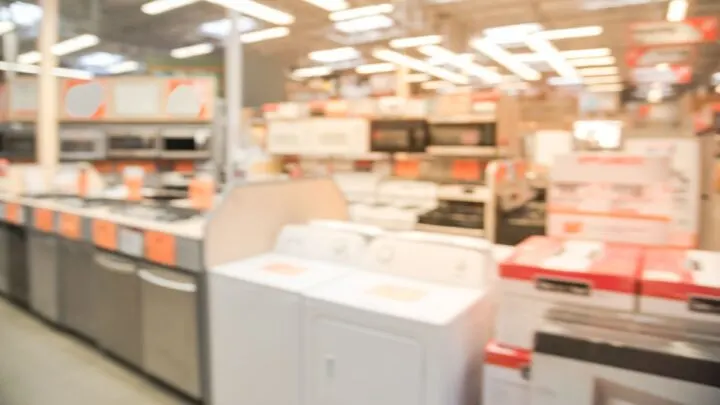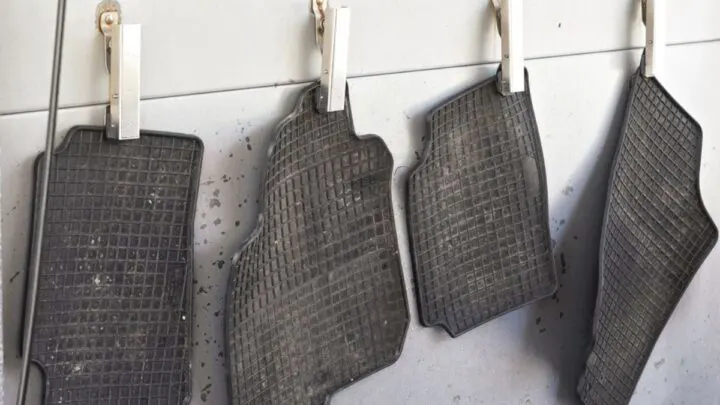Car mats have long been used to protect the underlying car floor and should last the entire vehicle’s lifespan.
They also help maintain high levels of cleanness within our cars as they trap dirt, dust, and food.
After that, you can pull out the mat, clean it, and you’re good to use it again rather than washing your vehicle.
However, a question in many people’s minds is how long does it take a car mat to dry? And, if I want it to dry faster, can I put it in the dryer?
Whether you can put your car mat in the dryer or not depends on the material. If the mat is made from plastic, rubber, or vinyl, you should not put it in the dryer. However, you can put fabric car mats in the dryer since they don’t deform under the dryer heat.
Next, let’s look at the working of a dryer to understand why you shouldn’t dry some car mats in it.
How a Dryer Works
Regardless of the technology, all dryers use a combination of heat, air, and motion to dry fabrics such as clothes.
They borrow this working principle from the natural drying we experience from the sun.
From school, if you remember, clothes would dry faster on a sunny and windy day than on a sunny and calm day or a cloudy and windy day.
The sun heats the clothes, causing water in the wet fabric to evaporate, but it remains on the surface. If it’s windy, the wind blows away the water vapor, creating a void occupied by more vapor.
The process goes on and on until the cloth is dry.
Now, lift those natural principles and put in an electrical appliance that can produce more heat and move more air per surface.
Electric Dryers
First, we’ll look at the electric dryers with heating coils similar to those in our ranges or kettles.
When you switch it on, power flows from your power outlet, the circuit, and the coil.
However, the coil is made from a resistant material that generates immense heat when the current passes through to complete the circuit.
The heat is transferred to the fabric through convection and moved by a fan or blower through the dryer.

Gas Dryers
Second, we’ll look at propane or gas dryers that rely on a pilot light that ignites the gas, creating heat.
And since it can’t transfer the heat directly to the clothes, the dryer heats some metal plates.
When hot enough, heat from the metal plates transfers to the fabric and is forced by a fan or blower through the dryer.
What Happens When You Put Plastic, Rubber, or Vinyl Car Mats in the Dryer?
As we’ve seen, the principle of operation of dryers relies on heat, air, and motion.
A hot dryer causes plastic, rubber, and vinyl to break into minute pieces that may build up in your dryer’s lint screen, causing a fire.
In some cases, the dryer’s heat can separate mat layers, distort the shape of your mats or even melt some sections.
Furthermore, it would help if you never put all mats with plastic, vinyl, or rubber parts or edges in the dryer.
As much as it’s vastly made of fabric, some parts will deform and hence ruin the mats.
On the brighter side, most dryers have thermostats and thermal fuses that detect an overheating and shut down the appliance before your mats or clothes melt or start a fire.
Therefore, if your dryer heats up to the point that it can melt rubber, the chances are that its thermostat or thermal fuse is faulty and needs repairs or replacement.
What’s the Best Option to Dry Plastic, Rubber, or Vinyl Car Mats?
Air-drying is the best way to dry removable plastic, rubber, or vinyl car mats.
Start by removing the wet mats from the car or washing station and hang them to dry naturally.
And, on a windy and sunny day, you will have to wait for less than an hour for the mats to dry completely.
Plastic, rubber, and vinyl doesn’t absorb water into their material; hence you’ll wait for the surface water to dry.
Don’t put a wet mat on the car’s floor as it may lead to mold, corrosion, rust, or even electrical problems when they’re too damp.
How to Dry Car Mats
If your car leaks in water, and you’ve recently discovered the wet mats, your only option to prevent mildew growth is to dry them.
If they’re made from fabric, you can use a dryer to hasten the process, especially during winters or stormy days.
Regardless of the weather conditions, here are three steps to dry your car mat.
Sop Up Excess Water Using a Microfiber Towel
Microfiber is a material commonly used in towels, as it has excellent water absorption properties.
It can absorb seven times its weight in water and has the same surface area as cotton cloth. If you don’t own one such towel, it’s high time to acquire one.
Once you have it, pat down the mat area with water firmly until you feel that the towel is holding too much water.
Squeeze the water into a bucket and repeat the process until you’re satisfied.
Vacuum the Mats Using a Wet/Dry Shop Vac to Remove Excess Moisture
Get a bucket vacuum or shop vac and set it to “wet” before beginning the process.
Rake the vac’s hose over the wet surface while ensuring to turn the mat if it’s made of several materials.
Air-Dry to Evaporate the Rest of the Moisture
The last step is to air-dry the mat to evaporate and dry all damp patches on the mat.
The drying process takes several hours to two days, depending on the environmental conditions. And for your good, don’t put a wet mat on the car’s floor.
You might subject yourself to damp conditions, which may lead to condensation within the vehicle.

Final Remarks on Drying Car Mats
The best way to dry your car mats is air-drying.
However, if the ambient temperatures don’t allow for air drying, you can opt for the dryer if your car mats are made of fabric.
For plastic, rubber, or vinyl mats, the best option shall be to wipe them dry and complete the drying process using a shop vac.
